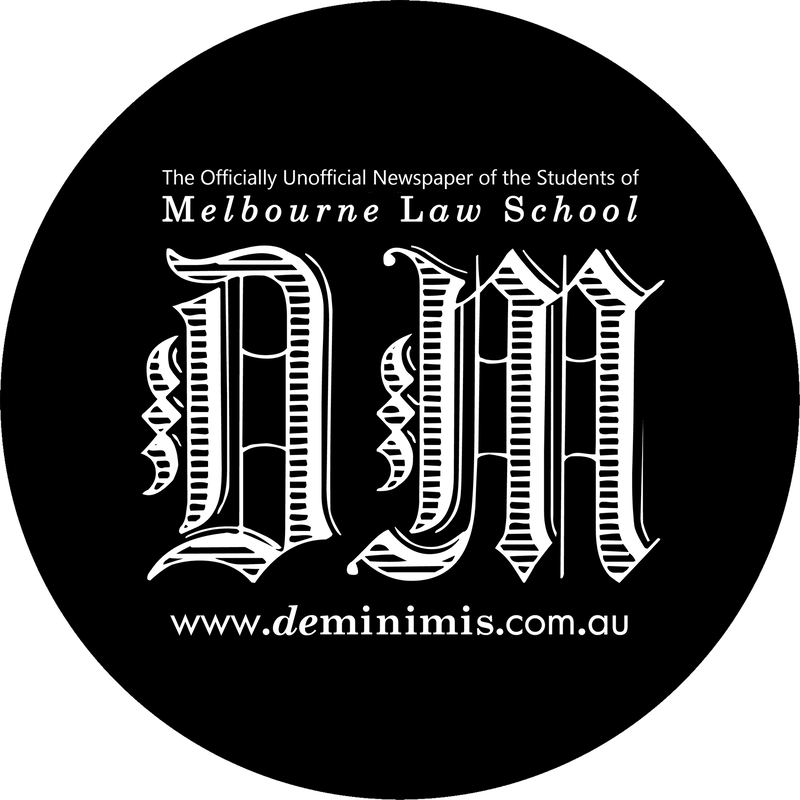|
Issue 11, Semester 1, 2019 LARA Editor's note: The version of this article published here on this site contains revisions, and differs to the version released in print on Tuesday 21 May 2019. For those not in the know, “unicorn hunters” are straight couples who create Tinder profiles to look for women for threesomes, and they are increasingly omnipresent in the modern queer dating landscape. Even people from this very law school make these profiles! I have seen them with my own deeply homosexual eyes. Virtually every queer millennial woman I know is familiar with this phenomenon, and I have yet to meet one who isn’t deeply annoyed by it. But are queer women justified in our negative feelings towards these people? Or are we sex-negative prudes, NIMBYs of the lesbian-internet-dating-world, narrow-mindedly pooh-poohing the expansion of sexual diversity and exploration? Friends: let’s discuss. For me, the unicorn-hunter phenomenon is irritating because queer women are a marginalised group, and spaces created specifically for us to meet each other are under pressure or non-existent as a result of the marginalisation we face. Straight people coming into the few spaces that we have for ourselves—like the women-looking-for-women section of Tinder—feels deeply disrespectful. There are limited spaces for queer women to meet each other in meatspace. While we’re fortunate to have a variety of queer events in Melbourne, no full-time venues exist for us, nocturnal or otherwise. This stems in large part from the intersection of homophobia and sexism: queer women tend to earn much less than a lot of other people, including gay men, which means we have less money to create, maintain and support such spaces. (And this is without even considering how other factors, like race or disability, can further exacerbate marginalisation.) While there are other ways to meet queers, these are usually restricted to specific interests, like queer-friendly sports clubs or queer book clubs. Meeting queers online, outside of apps, is possible—but, again, it’s limited. There are Instagram pages and Facebook groups for this purpose, although these are usually limited to niche sub-sections of LGBTQ+ community. The comment sections of queer media are also good places for meet-cutes, but the existence of such media is constantly under threat. Multiple queer publications have folded over the past few years, including The Toast and The Establishment, as a result of not being able to monetise, partially because of advertisers’ unwillingness to sponsor queer female media. If they haven’t folded yet, they’re constantly on the brink of it, like Autostraddle. Most other queer publications have been severely cut back, like INTO and AfterEllen; are primarily print-based media, which don’t create the same opportunity for interpersonal connection; or have no comments sections. (Comments sections are often eliminated because they take a lot of resources to maintain and, again, we’re an under-resourced community.) Naturally, we sometimes meet people outside of these situations—we connect in non-queer spaces, our friends set us up with each other, we anonymously comment on De Minimis articles. But we are still marginalised, and we are still a minority, which makes serendipitous encounters a lot more rare and difficult. Spaces that enable queer-specific connections, like WLW Tinder, are extremely important. (Nota bene: yes, there are dating apps specifically for queer female dating but they tend to have much fewer people, as they’re less well-known.) There are other reasons to dislike unicorn hunters, including the fact that they sometimes perpetuate the long tradition of viewing queer female sexuality as existing purely for male gratification. Film and TV often portray our sexuality as being titillating and salacious: a classic example of this is the marketing that promoted the music group T.A.T.u. The pervasive desire for FFM threesomes perpetuates this idea: it seems (from these couples’ Tinder bios) that these threesomes are sometimes pursued because the man would find it hot to watch his girlfriend hook up with another woman. This is not very nice for queer women! We exist in our own right, not for your viewing pleasure. If nothing else, these profiles are annoying because they engage in what is essentially misleading and deceptive conduct. Their profiles list them as a ‘woman looking for women’; often, it’s the woman alone in the photos, or at least in the first few; or only the very last line of the profile mentions they’re a couple. All of these things create an impression that is extremely untrue! You are not a woman. You are a woman and a man. At the absolute very least you could be upfront about this. Of course straight couples can have FFM threesomes; of course queer women can partake in them. But why do you have to take this space from us, when we have so little to begin with? Just use threesome apps instead (like Feeld or 3Somer), be respectful of everyone involved, and, in the words of this reputable publication’s Managing Editor, stay the hell off my lawn. Lara is a Third Year JD Student.
Bi the way
21/5/2019 04:36:58 pm
This topic is one that makes me feel pretty torn, because I can see it from both sides. It also makes me feel super anxious because I worry that there is a suspicion of queer/bi/pan women in relationships with men or an assumption that they're doing their boyfriend/husband/partner's bidding rather than pursuing their own desires.
Ellie
21/5/2019 04:57:40 pm
Omg yes!!!! Thank you commenter!! This makes me feel so uncomfortable too as a very queer woman in a "straight appearing" relationship, I often feel judged as an outsider in queer spaces and it's so awful and anxiety inducing. I hate to think how this article would sound to queer women in straight appearing relationships who might be nervously dipping their toes in the queer lady world through threesomes with their boyfriends, as an agreed way to explore their queerness within the bounds of their relationship. I think that you can't really fairly write someone off as part of the shitty unicorn couples the author describes without the women expressly telling you that they're straight, which in my experience in these spaces often doesn't happen. Totally hear where the author is coming from, but I really feel uncomfortable about the snap judgements demonizing unicorns requires about the sexuality of the women involved - as if bi/pan/not "gold star" queer women don't already feel excluded enough from the queer community!!
Well said
21/5/2019 05:07:07 pm
Bisexual heteroamorous
Bi the way
21/5/2019 05:07:16 pm
Thanks Ellie! It's kind of ironic that I'm fighting the bi/pan-visibility fight when I've never actually summoned up the courage to come out, but De Minimis' anonymous commenting policy is good for something I guess :)
Lara
21/5/2019 05:55:36 pm
Hi!
Ellie
21/5/2019 06:46:36 pm
Thanks for your response Lara! I'm loving the unusually respectful and kind de min comments vibe on here (how good are queers?)
Lara
21/5/2019 09:20:21 pm
@ Ellie:
Lara
21/5/2019 09:27:54 pm
Also, something not directly-directly relevant to this conversation, but worth noting generally that I didn't emphasise in this article, and that I'm happy to call myself out on, is -- another reason why it's important not to exclude straight-passing couples from queer spaces is that, in addition to their sexual identity being queer or not, one (or both!) of them might be gender-non-conforming or trans.
Btw
21/5/2019 10:58:35 pm
Thanks for all your thoughtful answers, Lara - you made some great points!
Lara
24/5/2019 11:02:42 am
@ BTW: I'm so happy + grateful that all the commenters have been so respectful and kind! it's so dreamy and lovely to be building a sweet little pocket of queer space right here in the de minimis comments section ✨
Bi the Bi
21/5/2019 04:58:31 pm
Thank you for a terrific article.
Lara
21/5/2019 06:08:42 pm
Hi! Thanks for your comment :)
Bi the Bi
22/5/2019 12:10:30 am
Thanks for your considered response!
Daniel
21/5/2019 06:00:53 pm
As with most things, I think this can be simply fixed by queering up the underlying establishment - in this case, Tinder.
Ellie
21/5/2019 06:09:05 pm
Yes love this idea Daniel!!
Lara
21/5/2019 06:13:57 pm
jajaja synchronicity! I didn't see this comment while I was replying to the one above.
Anon
21/5/2019 07:16:27 pm
I wonder why there is such a disparity in the sexuality pay gap between Australia and some of the other countries mentioned in the studies discussed in the link below. In the US, Germany, Canada and the UK it seems that queer women significantly out-earn their straight counterparts, whereas in Australia queer women earn approx. 28% less.
Lizz
21/5/2019 08:19:11 pm
Not sure if I’m over-simplifying (please correct me if I am), but I agree with a lot of what was said in this article whilst also being cognisant of the fact that bi-erasure is real and queer women do need a safe space to dip their toes in etc etc.
Ellie
21/5/2019 08:35:50 pm
Yes love that idea Lizz! 💗
Lara
21/5/2019 08:48:54 pm
ooooooof, yes! thanks for articulating that annoyance so well - "cishet men taking up space and feeling entitled to be there".
Lara
21/5/2019 08:57:00 pm
oops, that published before i finished writing it, but basically - your suggestion is really good! anecdotally i hear from my straight female friends that those profiles are a lot less common in their tinder experiences (although to be fair, the pool of str8 dudes is a lot bigger than the pool of queer women) so, yes, a suggestion worth taking up while we wait for tinder to queer its underlying structure
Question
21/5/2019 11:25:06 pm
This is an interesting suggestion! I’m worried a male-account couple profile risks disempowering the female in the relationship, and might only encourage the toxic, male-led, unicorn hunting couples?
Lizz
22/5/2019 02:09:52 pm
Not sure if having the couple account exist on the male profile would disempower women. In both scenarios, there’s a couple messaging people as a unit. The only difference is that with one option, gay women who have no interest in men and want a safe space are able to filter out the profile by gender. The woman in the relationship could still be in charge of the account, and handle all the interactions, still have autonomy, still have the app on her phone etc. but would have to use a profile labeled as male — a profile that’d still be accessible to bi women. And of course, women would still be free to use their own female-identifying profile if that wanted to have a same-sex only experience etc.
Question
23/5/2019 08:36:25 pm
Hey! Thanks for your considered response.
Lara
24/5/2019 10:53:07 am
@ QUESTION: that's a really interesting question, and it touches on another point that I would have liked to bring up in this article. I’m glad you raised it :)
Lara
24/5/2019 10:57:34 am
re: "my primary audience was the het couples using tinder, not other queers" -- not that the two are exclusive, obvi (!!) Comments are closed.
|
Archives
October 2022
|



